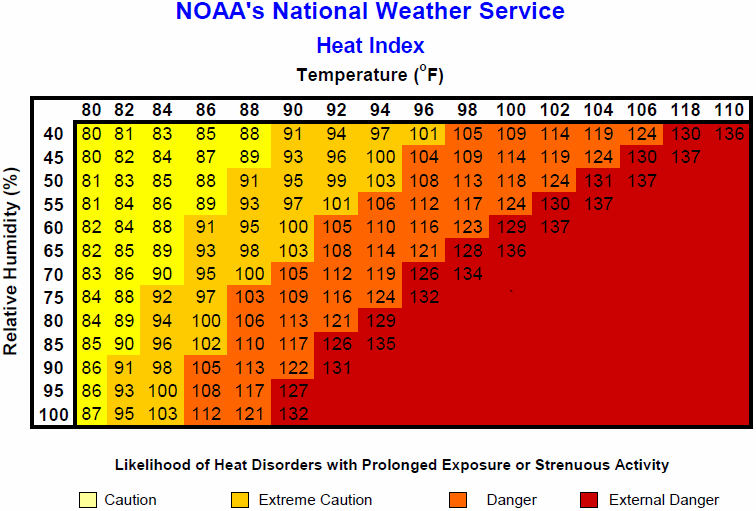Heat Index Calculator
It's a hot day. You check the thermometer on your phone; it shows only a moderate temperature, but once you leave the house, the heat becomes too much to bear. Why does the apparent temperature differ so much from the real one? It is because the heat index today is particularly high. Our heat index calculator can tell you exactly how high it is. Read on to discover what is heat index and how to calculate it. You may also be interested in the wind chill calculator.
What is the heat index?
The heat index, or the humidex, is the "felt air temperature". It takes into account both the air temperature and its humidity to describe how hot it really feels. Moist air feels hotter because it hinders the evaporation of sweat — our natural cooling mechanism.
It is worth noting that the heat index only considers the relative humidity in shaded areas. Hence, the true heat index in full sunlight can be even higher than the one specified by the heat index calculator.
How to calculate the heat index
Our calculator can determine the heat index based on temperature and either relative humidity or dew point. For further information on these parameters, check out the dew point calculator.
- Measure the temperature outside. We can assume it's as high as 95 °F.
- Determine the relative humidity or the dew point. In this example, we will assume that the relative humidity is 75%.
- Type these values into the heat index calculator.
- The heat index today is almost 128 °F. Oof!
Heat index chart

Is the heat index accurate?
You might be surprised, but not really. The heat index was invented by R.G. Steadman and considered about 20 factors. These included the speed of walking, a person's height and weight, the speed of the wind, latitude (and hence the angle of the sun's rays), and even the pressure decrease resulting from altitude.
When the heat index formula was simplified to depend on only two parameters, all of these factors were assumed to be constant. If you walk faster than 1.4 m/s or you are hiking high in the mountains, your perceived temperature might differ from the one indicated by our calculator. Nevertheless, it's accurate enough to let you know when the weather conditions are bad enough to cause heatstroke.
FAQs
What are the factors affecting heat index?
The heat index depends on two factors: temperature and relative humidity. It is used to estimate the combined effects of both these factors on the felt temperature, using assumptions about the human body characteristics, physical activity, and exposure to the sun.
How do I estimate the heat index?
To estimate heat index:
- Find out the temperature.
- Note down the relative humidity.
- Using the NOAA data chart, trace the relative humidity horizontally until it meets the temperature line. The intersecting point is the heat index.
How do you interpret the heat index of 80 °F?
A heat index of 80 °F, or 27 °C, is equivalent to the combination of 40% RH and 80 °F. NOAA advises caution when going outdoors in such conditions.
Is the heat index of 105 °F hot?
NOAA advises a heat index of 105 °F is dangerous and can cause heat-related health problems like cramps, exhaustion, and heatstroke.